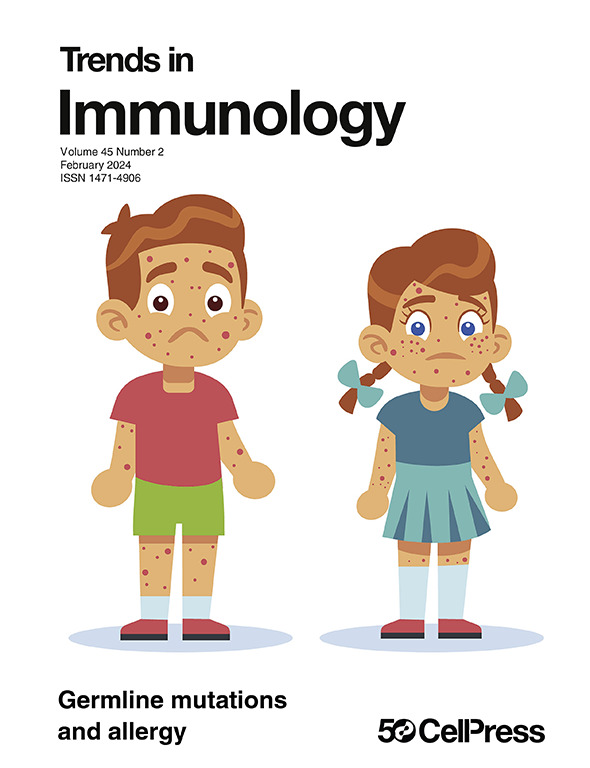效应器触发免疫中意想不到的特异性。
IF 13.1
1区 医学
Q1 IMMUNOLOGY
引用次数: 0
摘要
效应触发免疫(ETI)使宿主能够通过监测一些关键的细胞过程对病原体做出反应。一般认为,ETI 对相关病原体效应物的反应是相似的。然而,最近来自无脊椎动物模型秀丽隐杆线虫和孔形成毒素的证据表明,ETI 比以前预期的要复杂得多,也具体得多。本文章由计算机程序翻译,如有差异,请以英文原文为准。
Unanticipated specificity in effector-triggered immunity.
Effector-triggered immunity (ETI) enables hosts to react to pathogens by monitoring few key cellular processes. ETI responses are assumed to be similar toward related pathogen effectors. However, recent evidence from the invertebrate model Caenorhabditis elegans and pore-forming toxins indicates a much more complex and specific ETI than previously anticipated.
求助全文
通过发布文献求助,成功后即可免费获取论文全文。
去求助
来源期刊

Trends in Immunology
医学-免疫学
CiteScore
25.10
自引率
0.60%
发文量
130
审稿时长
6-12 weeks
期刊介绍:
Trends in Immunology serves as a vital platform for tracking advancements across various areas of immunology, offering concise reviews and hypothesis-driven viewpoints in each issue. With additional sections providing comprehensive coverage, the journal offers a holistic view of immunology. This broad perspective makes it an invaluable resource for researchers, educators, and students, facilitating the connection between basic and clinical immunology. Recognized as one of the top monthly review journals in its field, Trends in Immunology is highly regarded by the scientific community.
 求助内容:
求助内容: 应助结果提醒方式:
应助结果提醒方式:


